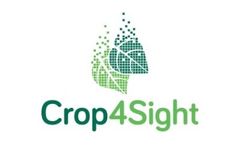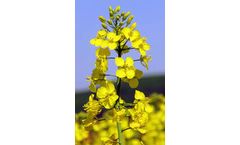Seed Sizing Articles & Analysis
13 articles found
As a core component of seed certification programs, it verifies the proportion of pure seeds in a given sample and detects contamination by other crop seeds, weed seeds, and inert material. ...
We are welcomed by Maurice Hadders, potato grower in the countryside on the border between Flevoland and Friesland. The processing of potatoes is ongoing at full capacity, but luckily Maurice does have time to sit down and talk to us. We sit around a large round kitchen table, with coffee served in Boerenbond. We talk about the move to Schouten Optica CS. A deliberate and exciting choice, which ...
Methods for Genome Size Determination Accurate determination of plant genome size relies on advanced laboratory techniques. ...
This can also act as a barrier to rooting.2. Check seed quality Thoroughly check the quality of seed when it arrives on-farm and try and order it well ahead of planting time to give you more time to check the contents properly when it arrives.It’s a good idea to work closely with a trusted seed supplier to reduce the risk of disease being brought ...
It tailors seed rates to customer requirement, planting date and proposed burndown and harvest date, and growers can also model several scenarios to see what affect altering seed rate or planting date will have on yield and size distribution of tubers in their ware crops. ...
Seed coat plays an important role in many biological processes, such as nutrient transport, controlling seed size and resisting biotic and abiotic stresses. Seed coat contains many secondary metabolites such as pigment, lignin, and fiber, and the synthesis of these secondary metabolites is inseparable from the normal development ...
Relatively high seed prices and low canola (Brassica napus L.) grain prices created a controversy over using farm-saved seed from hybrids. ...
Field experiments were conducted in five central Minnesota environments to examine the effects of multiple pod removal, shade, and defoliation treatments on soybean yield, seed size, seed protein concentration, and seed oil concentration. Pod removal, shade, and defoliation treatments each resulted in decreased yield and altered ...
The most contrasting groups came, respectively, from south China (Sichuan–Anhui), characterized by late maturity and small seed size, and from north China (Liaoning–Heilongjiang), characterized by earliness and short habit. ...
Seed size, a key quality determinant in the marketing of the cool-season food legume chickpea (Cicer arietinum L.), can be reduced under terminal drought. ...
Introgressing genes from unadapted breeding lines into cultivars may reduce seed yield or quality of the resulting lines. This study's objectives were to determine if (i) an RKI resistance quantitative trait locus (QTL) is linked to the T-locus conditioning pubescence color in G93-9009, and (ii) a yield or seed quality loss is associated with introgressing ...
High levels of grain protein content, test weight, and seed size and endosperm color may also add value. Seed yield potential, in part, determines the economic feasibility of producing human food varieties. To determine the potential of food barley production in the dryland production areas of the Pacific Northwest of the United States, 33 ...
Data were recorded for specific leaf area (SLA), SPAD chlorophyll meter reading (SCMR), and biomass, pod yield, harvest index, number of mature pods per plant, seed per pod, and seed size. The h2 for biomass, pod yield, DTI (drought tolerance index) (pod yield), DTI (biomass), HI, SLA, and SCMR were high for all tested crosses (0.54–0.98). ...





